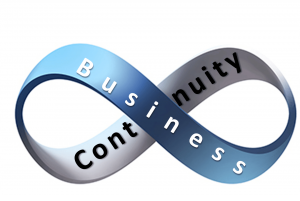Best Practice – The Lowest Price May Not Save You Money
Small businesses face many challenges as they start up, grow, and thrive. Technology and IT services are one such challenge. While small businesses can find the technology and IT services they need, and want, IT costs often poses a barrier to entry. The range of competing solutions, evolving security requirements, the need for cyber insurance, and the lack of specialized advice combine to create additional complexity and stress.
Faced with budget constraints, and uncertain of the choices before them, small businesses often focus on price. More specifically, they look for the lowest-priced technology and services that they believe will meet their needs. Unfortunately, price-first decisions can lead to significantly greater costs over time.
What to Avoid
Free Services
- Vendors market free services to consumers. These services usually lack features, security, and support necessary for effective business use. Using these features often violates industry or legal standards for protecting information. The result: you face increased risk and liabilities.
Consumer Tech
- Manufacturers often price laptops and other consumer devices lower than their business model counterparts. And while feature differences may be minimal, business models typically offer longer warranties (1 year versus 30 to 90 days) and include certified repairs and warranty services. Often, these services include, or can be upgraded to include, on-site service on the next business day.
- The impact is longer repair and service times, resulting in more business disruptions and downtime.
Good Enough
- Many businesses choose less expensive solutions because they are “good enough.” These solutions may provide anywhere from 60% to 80% of what you need or want.
- Although this may work in the beginning, businesses will often end up adding another low-cost solution when they need the additional features.
- You end up with multiple tools with overlapping features and silos of data and information. The result is reduced efficiency and productivity.
Skimping on Security
- Small businesses feel like a small target for cyber attacks. In reality, small businesses are easier targets because they are generally more vulnerable.
- And while your business may not be a specific target, you are more likely to get caught by broad-based attacks, such as ransomware.
- We have blogged quite a bit on the increasing security demands. Stepping back from security reduces costs, but will result in business disruption, financial and legal liability, and higher recovery costs.
- Most small businesses fail within six months of a successful cyberattack.
Focus on Value
When making technology and IT service decisions, focus on value, not cost. Value includes consideration of factors such as efficiency, enablement, overhead, flexibility, and expandability.
Here are some other value considerations:
- Understand the Demands on your Business. Regulatory requirements and industry standards will impose features and limitations on the technologies and services you choose.
- Evaluate Current and Future Needs. Avoid lower-cost solutions that will need future upgrades or replacements. These changes can cost more than the initial savings and can disrupt, or require, significant changes to workflows and business operations.
- Consider Scalability. Many cloud services offer subscription options you can upgrade as your requirements evolve. While you should not avoid necessary security features, you can scale other capabilities to your current needs.
- Focus on Best Fit. Assess how well the technologies and services you are considering will fit together. You lose the savings on lower-cost services if you need to manually move data or add third-party data sync tools.
Call to Action:
If you have not done so recently, now is a great time to step back and assess your IT services and solutions. Our Cloud Advisors are ready to help and assist with any questions or concerns. Contact us or schedule time with one of our Cloud Advisors.
About the Author
h Bill is a Senior Cloud Advisor responsible for helping small and midsize organizations with cloud forward solutions that meet their business needs, priorities, and budgets. Bill works with executives, leaders, and team members to understand workflows, identify strategic goals and tactical requirements, and design solutions and implementation phases. Having helped over 200 organizations successfully adopt cloud solutions, his expertise and working style ensure a comfortable experience effective change management.
Bill is a Senior Cloud Advisor responsible for helping small and midsize organizations with cloud forward solutions that meet their business needs, priorities, and budgets. Bill works with executives, leaders, and team members to understand workflows, identify strategic goals and tactical requirements, and design solutions and implementation phases. Having helped over 200 organizations successfully adopt cloud solutions, his expertise and working style ensure a comfortable experience effective change management.

 Several weeks ago, in a town not far from our headquarters, a massive fire destroyed a building housing six small businesses. Our local business journal followed up a few weeks after the disaster with a poll asking business owners how prepared they are for a major disaster.
Several weeks ago, in a town not far from our headquarters, a massive fire destroyed a building housing six small businesses. Our local business journal followed up a few weeks after the disaster with a poll asking business owners how prepared they are for a major disaster. QuickBooks is the leading accounting package for small business. And yet, many businesses cannot run QuickBooks Online, the Software-as-a-Service (SaaS) version. Whether the online versions lack industry-specific features you need, or you have integrated third party tools/add-ons, staying with an on-premise version of QuickBooks remains the best solution for your business.
QuickBooks is the leading accounting package for small business. And yet, many businesses cannot run QuickBooks Online, the Software-as-a-Service (SaaS) version. Whether the online versions lack industry-specific features you need, or you have integrated third party tools/add-ons, staying with an on-premise version of QuickBooks remains the best solution for your business. This post is the second in a series addressing concerns organizations may have that prevent them from moving the cloud-based solutions.
This post is the second in a series addressing concerns organizations may have that prevent them from moving the cloud-based solutions. In May 2012, CFO Research conducted a survey among senior finance executives at large U.S. companies to examine their views on the business value of cloud computing, as well as their plans and priorities for adopting cloud-based systems in the years ahead. This report presents the findings from interviews with 310 financial executives across 15 industries.
In May 2012, CFO Research conducted a survey among senior finance executives at large U.S. companies to examine their views on the business value of cloud computing, as well as their plans and priorities for adopting cloud-based systems in the years ahead. This report presents the findings from interviews with 310 financial executives across 15 industries.